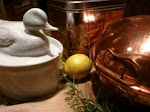The Hotel Les Merinides sits on a hillside overlooking the ancient, exotic Moroccan city of Fes. Below, the historic medina of Fes el Bali, established in 789 AD, is a sea of white-washed buildings punctuated by the green-tiled roofs of the University of Al-Karaouine, the oldest continuous university in the world, and its Karaouine Mosque, one of the largest and oldest in Africa. These emerald jewels in the city reflect the jewel Fes long represented to the Western-world as a center of science and learning for medieval Muslims and Christians alike. Within the medina, one can step back into the time of camel trains delivering gold from Timbuktu, spice traders selling their goods among towering cones of cumin, coriander and turmeric, the leather souk where hides are still tanned and colored by foot in open pits. A walk through the maze-like narrow alleys of the medina will pass by a boy taking dough to the neighborhood communal bakery, a farmer pushing a cart of Clementines for sale, or a sweets-maker carrying a tray piled high with candies and cookies.
Few of these things were making an impression on me as I sat on the hotel’s terrace after the long drive in from the coast. The way this city is cradled by its surrounding Atlas mountain range hills was how I wanted to be cradled in bed to nurse the aches and chills of the cold I felt. Learning this, they served me Morocco’s classic harira soup, a lentil and tomato soup with turmeric and cinnamon, cilantro, parsley, celery, onion and sometimes chickpeas. The chill went away and I was filled with zesty, warming goodness. It was that same feeling I wanted to feel last night after a cold and rainy day. Fall is setting in, night is coming earlier, and I wanted to feel the warmth from the inside. My remaining pomegranate I needed to use sent me to the opposite end of the Muslim world, but even though I looked through recipes from Persia, I remembered that Moroccan harira soup from that day in Fes. This Persian pomegranate and lamb soup has many of the same characteristics. It starts with lentils, onions and garlic, and is added upon with cilantro, parsley and turmeric. Of course, pomegranate juice is mixed in, and lamb meatballs along with rice also provide a hearty and Middle-Eastern flavor reminder. Try this soup on a chilly day when brightness can come from a pomegranate and warmth from the inside out. Serves 4.
Ingredients:
2 tbsp olive oil
1 large onion, thinly sliced
2 garlic cloves
¼ cup lentils
4 cups water
1 tsp salt
¼ tsp black pepper
½ tsp ground turmeric
1 cup chopped parsley
1 cup chopped cilantro
1 cup chopped scallions
½ cup basmati rice
½ lb ground lamb
1 small onion, grated
1/2 tsp salt
¼ tsp black pepper
2 tbsp chopped parsley
1 slice white bread, broken into pieces
2 tbsp milk
2 tbsp sugar
2 cups pomegranate juice with a handful of seeds for garnish
2 tbsp lemon juice
Directions:
In a heavy pot over medium heat, warm the oil and soften the sliced onions. After a few minutes, add the garlic and continue to cook until golden. Add the lentils and cook, stirring for a minute to coat. Add the water and bring to a boil. Reduce the heat to a simmer and cook partially covered for 10 minutes. Add the salt, pepper, turmeric, parsley, cilantro and scallions. Continue cooking partially covered for another 10 minutes. Meanwhile, make the meatballs by combining the bread and milk. Squeeze out any excess milk and add to a bowl with the lamb, salt, pepper, parsley and grated onion. Mix together thoroughly and form into small meatballs. Add the meatballs and rice to the soup, return the soup to a simmer and continue to cook for 10 minutes. Stir in the pomegranate juice, sugar, and lemon juice. Adjust the seasoning if desired, and serve.












